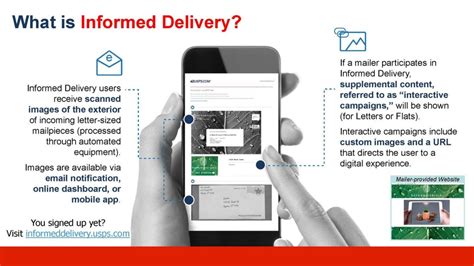Mail Delivery: What You Should Know
Mail delivery, a seemingly simple process, is actually a complex operation involving a vast network of people, vehicles, and technology. Understanding how mail gets from your mailbox to its destination – and vice-versa – can help you avoid delays and ensure your correspondence arrives safely and on time. This guide explores the intricacies of mail delivery, addressing common questions and concerns.
How Does Mail Delivery Work?
The journey of a letter or package is a fascinating logistical feat. It begins with you dropping your mail into a collection box or handing it to a postal worker. From there, the process typically unfolds as follows:
-
Collection and Transportation: Mail is collected from various points throughout the day and transported to a local processing and distribution center. This often involves specialized trucks and sometimes even airplanes for long distances.
-
Processing and Sorting: At the processing center, mail is sorted by destination using automated equipment like barcode scanners and sophisticated sorting machines. This ensures efficient routing to the correct post office.
-
Delivery: Once sorted, mail is loaded onto delivery trucks and transported to individual mail routes. Postal carriers then deliver the mail to specific addresses within their designated area.
-
Special Handling: Packages and larger items require different handling procedures, often involving additional processing steps and specialized transportation. Tracking information allows both senders and recipients to monitor the progress of their packages.
What Are the Different Classes of Mail?
Understanding the different classes of mail is crucial for choosing the most efficient and cost-effective option for your needs. The primary classes include:
-
First-Class Mail: This is the most common class for letters, postcards, and envelopes. It generally offers the fastest delivery times.
-
Priority Mail: Ideal for heavier packages and documents that require faster delivery than First-Class Mail. It typically includes tracking.
-
Parcel Post (Package Services): This is the class for larger and heavier packages, offering various options based on size and speed requirements.
-
Certified Mail: This adds proof of mailing and delivery to your First-Class Mail or Priority Mail. A return receipt can also be requested.
-
Registered Mail: Provides the highest level of security and tracking for valuable items.
Choosing the correct mail class significantly impacts both cost and delivery speed.
What Factors Can Affect Mail Delivery Time?
Several factors influence how long it takes for your mail to reach its destination:
-
Distance: Longer distances naturally take more time.
-
Mail Volume: During peak seasons (like the holidays), higher mail volume can lead to delays.
-
Weather Conditions: Severe weather can significantly disrupt mail delivery schedules.
-
Processing Center Backlogs: Occasionally, unforeseen issues at processing centers can cause temporary delays.
-
Incorrect Addressing: Improperly addressed mail can significantly delay or even prevent delivery.
What Happens If My Mail Is Lost or Damaged?
If your mail is lost or damaged, you should immediately contact your local post office. They will investigate the issue and may require you to file a claim. Keeping a copy of your mailing receipt or tracking information is crucial in these situations.
How Can I Track My Mail?
Most mail classes, especially Priority Mail and Parcel Post, offer tracking capabilities. You can typically track your mail's progress using the tracking number provided by the postal service's website or app.
What are the Dimensions and Weight Limits for Mail?
The postal service has specific guidelines on the size and weight of mailpieces. Exceeding these limits will usually result in additional fees or refusal of service. It's crucial to check the current postal regulations before mailing oversized or heavy items.
What are the different ways to send mail?
Beyond traditional postal services, there are now numerous other options available, including private couriers, digital mail services, and even drone delivery systems in some areas. Each method offers varying levels of speed, cost, and tracking capabilities.
By understanding the intricacies of mail delivery, you can better manage your correspondence and ensure your mail reaches its destination safely and efficiently. Remember to always check the postal service's website for the most up-to-date information on regulations, fees, and services.

